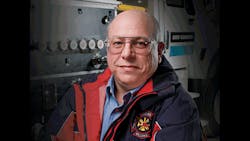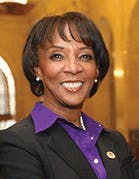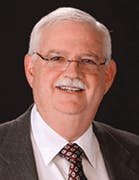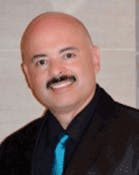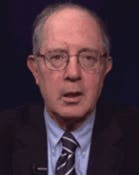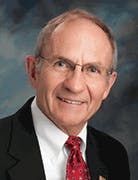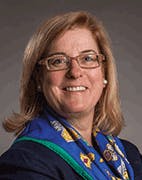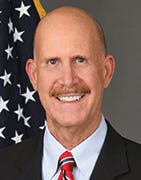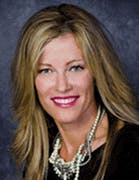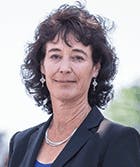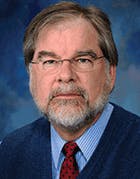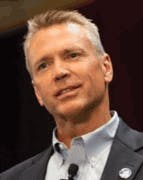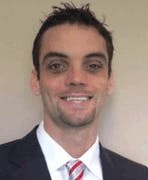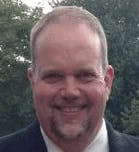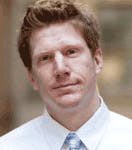The 50 People Who Most Influenced EHS in 2014-2015
It's been an interesting couple of years for the practice of EHS. It's pretty rare – and the failures have to be pretty egregious – for anyone to be indicted on criminal charges related to workplace safety [criminal charges for environmental crimes are more common]. In the past two years, several corporate officers and even EHS personnel have been indicted and are facing trial following the deaths of employees. While we generally try to keep this list positive, we feel that these cases have had and will continue to have an influence on EHS.
What's Going on in West Virginia?
In April 2010, an explosion ripped through the Upper Big Branch Mine in Montcoal, W. Va., killing 29 miners. The explosion uncovered a history of safety violations and cover-ups, and led to arrests, indictments and trials for several employees of Massey Energy, many of whom pointed the finger at former Massey Energy CEO Donald Blankenship. Now, it's his turn to have a day in court. A federal grand jury indictment of Blankenship in November 2014 alleges that from about Jan.1, 2008, through about April 9, 2010, Blankenship conspired to commit and cause routine, willful violations of mandatory federal mine safety and health standards at Massey Energy's Upper Big Branch mine. The indictment alleges that during this same period of time, Blankenship was part of a conspiracy to impede and hinder federal mine safety officials from carrying out their duties at Upper Big Branch by providing advance warning of federal mine safety inspection activities.
U.S. Attorney Booth Goodwin, who vowed to bring criminal charges against the operators of the Upper Big Branch mine if warranted, and has followed through on that promise.
The smell of licorice in the air on Jan. 9, 2014, was the first clue that something might be wrong in the Kanawha Valley in West Virginia. When personnel from the West Virginia Department of Environmental Protection and the state's Emergency Operations Center investigated, they discovered a chemical spill in the Elk River that runs through the valley and traced it back to a company called Freedom Industries Inc. (Freedom). United States Attorney Booth Goodwin at the time announced that his office and federal law enforcement authorities had opened an investigation into the circumstances surrounding the spill.
That investigation yielded fruit, and on Dec. 17, 2014, Booth announced that Freedom and six former Freedom officials had been charged with various federal crimes related to the spill, which tainted drinking water for 300,000 people. Former company president Gary Southern faces 68 years in prison if convicted on all counts. Also charged were former Freedom owners and officers Dennis P. Farrell, William E. Tis and Charles E. Herzing. Freedom environmental consultant Robert J. Reynolds and tank farm plant manager Michael E. Burdette also were charged and pled guilty to environmental crimes on March 18, 2015.
Facing Charges
Although this technically occurred in 2013, it missed the deadline for our June 2013 issue, and we wanted to make note of it. Philadelphia District Attorney R. Seth Williams on Nov. 25, 2013 announced his office was charging 49-year-old contractor Griffin Campbell with six counts of third-degree murder in addition to manslaughter and other charges for his role in the deadly building collapse at 22nd and Market Streets in June. A second contractor, Kary R. Roberts (a.k.a. Sean Benschop), also was charged with six counts of involuntary manslaughter, among other charges, for his role in the incident, which killed six people. Both men also were cited by OSHA, receiving three willful per-instance violations.
Calling the collapse "tragic and preventable," Williams added the tragedy "robbed our city of six amazing Philadelphians that perished in the rubble [and] the motive was greed."
Los Angeles County District Attorney Jackie Lacey on April 27 announced that Bumble Bee Foods LLC, as well as Bumble Bee's former Safety Manager Saul Florez and the company's Director of Plant Operations Angel Rodriguez are facing criminal charges related to willfully violating worker safety rules and causing the 2012 death of employee Jose Melena, who became trapped inside an industrial oven at the company's Santa Fe Springs plant.
The Contributors
, an internationally recognized expert in the application of safety culture and behavior-based safety strategies, founded ProAct Safety in 1993. Before founding ProAct, he was a director of training for Coca-Cola. Mathis has been a regular contributor to EHS Today for several years, often garnering more comments and kudos from readers than any other authors, including EHS Today editors.
, CSP, is CEO of Make My Day Strategies LLC, and also is a senior manager of EHS at Raytheon. He is a popular contributor to EHS Today's Safety Leadership blog. An avid blogger and author, he is a member of the Industry Advisory Council at Western New England University, board member of the Voluntary Protection Program Participants' Association and author of the book "Not Intuitively Obvious – Transition to the Professional Work Environment."
John Surma is special counsel in the Houston office of Adams and Reese. He has practiced law since 1995 and for the majority of his career he has counseled clients with health and safety issues in the workplace. He regularly blogs for EHS Today's EHS OutLoud Blog, and is a regular contributor to our LinkedIn group, EHS Today Networking Group. In his "day job," Surma helps employers deal with compliance issues and troubled safety programs, as well as catastrophic incidents involving both people and property. In addition to his OSHA practice, he also defends his clients in the litigation that ensues from catastrophic incidents.
, a regular contributor to the EHS OutLoud blog, served the U.S. Department of Labor for more than 40 years as a senior economist and policy/program analyst. He developed regulations, analyzed enforcement strategies and innovated methods of compliance assistance. For the last 27 years, in OSHA, he examined health and safety risks and regulatory feasibility. His most recent blog posts focus on the important topics of workplace violence and bullying in the workplace.
David Lynn, president and owner at Peak Safety Performance LLC, is a contributor to EHS Today as well as a speaker at EHS Today-sponsored events. He has 20 years of experience in the safety field at companies like Fluor, Owens Corning and Duracell, and is a former OSHA inspector. Lynn is the author of "Principle to Practice" and "Strategic Safety Plan."
The Gurus
, CIH, CSHM, is president of Cincinnati-based Technology Leadership Associates, a consulting firm specializing in increasing individual effectiveness and building organizational capability in the health, safety and environmental arena. He previously spent 28 years working with Procter & Gamble, where he retired as the company's director of health and safety worldwide. EHS Today credits him with developing the concept of transformational safety leadership.
, CSP, CFIOSH, EurOSHM, is president of Global Solutions Inc., an EHS management consultancy for multinational companies, and advises the Fortune 500 on EHS and sustainability. Seabrook recently spoke about supply chain accountability, the market economy, sustainability/corporate social responsibility (CSR), materiality reporting and the ISO 45001 management system standard for workplace safety and health, saying, "Risk is the common thread connecting supply chain accountability, the market economy, sustainability, materiality reporting and ISO 45001. This interconnectedness of risk impacts society, the economy and trade, an industry, an organization, its reputation and brand, its shareholders, business processes, product and service delivery capability, its workers and its supply chain."
The Government Appointees
, PhD, MPH, is Assistant Secretary of Labor for Occupational Safety and Health. As the longest serving assistant secretary in OSHA's history, he has worked to strengthen the agency's enforcement in high hazard industries, promote common sense worker protection programs and standards, expand compliance assistance provided to small employers, improve OSHA's whistleblower protection program, and increase outreach to the vulnerable populations who are at greatest risk for work-related injury and illness. He has also increased OSHA's focus and capabilities in the areas of data analysis and program evaluation. Michaels is an epidemiologist, currently on leave from his position as professor of Environmental and Occupational Health at the George Washington University School of Public Health.
, M.D., JD, is director of the National Institute for Occupational Safety and Health, and is a physician, professor, attorney and public health administrator.
Cynthia L. Attwood is acting chairman of the Occupational Safety and Health Review Commission, which adjudicates workplace safety and health disputes between the Department of Labor and employers. Prior to her appointment to the commission, Attwood served for three years as an administrative appeals judge on the Department of Labor's Administrative Review Board, adjudicating appeals brought under many labor laws and regulations. She also served as associate solicitor for Occupational Safety and Health, and before that as associate solicitor for Mine Safety and Health.
was sworn in as a commissioner of the Occupational Safety and Health Review Commission on April 2, 2014. Prior to her appointment to the commission, MacDougall represented employers throughout the United States with regard to matters involving labor, employment and occupational safety and health law, and previously served as chief legal counsel and special advisor to Former OSHRC Chairman W. Scott Railton.
U.S. Chemical Safety Board members Manuel "Manny" Ehrlich, Mark Griffon and Rick Engler, have had a busy and stressful couple of years. The board, which is down two members since President Barack Obama pressured former Chair and Chief Executive Officer Rafael Moure-Eraso, MS, Ph.D., CIH, to resign, is an independent federal agency charged with investigating industrial chemical accidents.
The Association Presidents
, is president of the American Society of Safety Engineers. She has 23 years experience in safety management and consulting. Her employment includes work in the construction and insurance industries, and as director of workplace safety for the Denver Zoological Foundation. She is currently a senior risk control consultant for Willis, North America Inc. in Denver, Colo. She will be succeeded this month by Michael Belcher, CSP, who is vice president, safety and risk, for DS Waters, where he leads safety and health efforts that affect more than 5,000 employees.
Christine A.D. Lorenzo, CIH, is the past-president of the American Industrial Hygiene Association and is an OSHA safety and occupational health manager for federal and state operations. She was succeeded last month as president by Daniel H. Anna, PhD, CIH, CSP, who is senior industrial hygienist and assistant group supervisor of environmental health and safety at the Johns Hopkins University Applied Physics Laboratory.
J. Torey Nalbone, PhD, CIH, serves as chair of the American Conference of Governmental Industrial Hygienists and is associate professor at the University of Tyler, Texas, and chair of the university's Department of Civil Engineering. He succeeded Robert F. Herrick, ScD, CIH, MS, senior lecturer on industrial hygiene, at the Department of Environmental Health of Harvard School of Public Health.
Mark A. Roberts, MD, PhD, MPH, FACOEM, is president of the American College of Occupational and Environmental Medicine and principal scientist or occupational and environmental health for Exponent Inc. He succeeds Kathryn L. Mueller, MD, MPH, FACOEM, and is a professor at the School of Public Health and Department of Emergency Medicine at the University of Colorado Anschutz Campus, Denver.
Jeannie Tomlinson, MSN, RN, COHN-S, FAAOHN, is president of the American Association of Occupational Health Nurses and is the director of corporate health and wellness for The Hartford in Glastonbury, Conn. She succeeds Pam Carter, MSN, RN, COHN-S, FAAOHN, a health, safety and wellness consultant in Swope, Va.
Mike Maddox is president of the board of the Voluntary Protection Program Participants Association, and vice president, corporate VPP, for NuStar Energy LP.
Brian Lyons is chairman of the board of the International Safety Equipment Association. Lyons is vice president, sales and marketing, for Enviroguard Inc. in Mesquite, Texas. He succeeded Mitch Lewellen, CEO of MCR Safety in Memphis.
Corporate Leaders Who Get It
is president and CEO of Egan Co. a specialty contractor in Brooklyn Park, Minn. "A common sentiment is that construction is a dangerous business and accidents are bound to happen," says Malecha. "Our company's approach will never accept this view as the standard."
Executive Vice President and COO Doug Sterbenz of Westar Energy Inc. promises that Westar never will trade the health and well-being of its employees "for getting the lights on, generating electricity or servicing a customer." Sterbenz repeats the mantra at all of his speaking engagements, and the quote is found throughout the company's facilities.
TP Mechanical CEO Scott Teepe Sr. says, "[Safety] is important to me because I want each one of our workers, who work hard in conditions that are sometimes difficult, to return safely home to their families. I don't want to be at the helm of a company if I get to go home and someone gets seriously injured … and that is why it's important to me to build the culture we've built."
The EHS Managers
Mike Snyder is director of corporate safety, industrial hygiene and loss prevention at Dow Corning Corp. Not content with mentoring other safety leaders, Snyder now is tackling the standards-setting process, in the hopes of guiding more EHS professionals to participate. "With my increased leadership involvement in both the National Fire Protection Association and Center for Chemical Process Safety processes, I am beginning to see – first hand! – several gaps in the awareness of EHS professionals concerning the operational procedures (and opportunities) in these codes/standards setting organizations," says Snyder. "For example, the NFPA has several ways for EHS professionals to become actively involved in the code development process, [from] submission of public input during code revision cycles up through the application/appointment process to become a principal technical committee member."
, is global director of EHS and loss prevention at automotive parts manufacturer Inteva Products. "Every aspect to what we do at Inteva Products is required to be ‘Safe Enough for Our Families,'" says Bates. "We utilize this philosophy during design builds, but also as we continue to reach [for] world-class [safety]."
J.B. Glass, CHST, CET, is the HSE manager for commercial diving company Aqueos Corp. Stop-work authority "is considered a responsibility at Aqueos," says Glass. "Hazard identification is integrated into the work style of personnel. The culture supports ownership of a solution if a hazard is identified."
is manager of safety and environmental at Scot Forge Co., a metal forging company. "Family and safety go hand in hand" at Scot Forge, says McGillivray, who adds there are numerous family members who work together at the company "so if someone does get hurt, there likely is a family member within the company who also [directly] is impacted by the incident."
"Making a business case for safety is simple," says Daniel Weekly, safety officer for Price Industrial Electric Inc. "Fewer injuries and increased safety awareness improve employee morale and make our customers happy, all of which result in more productive jobs and customers that are happy to have Price Industrial return to their job sites."
The Reporters
Journalist Bob Hennelly wrote a three-part series of articles for CityLimits.org that examined the successes, failures and questions that surround the construction monitors who keep an eye on the multinational construction companies, sub-contractors and unions that are demolishing and rebuilding New York.
One of the most ambitious undertakings this year has to be Blood Lessons, a series of articles by a group of reporters, photographers and staffers from the Texas Tribune and the Houston Chronicle. This group of 11 people – an almost unheard of number of staffers to assign to an article or even a series of articles these days – reported on the state of safety in Texas City 10 years after an explosion at the then-BP Texas City refinery killed 15 workers and examined safety in the refinery industry. The team from the Texas Tribune includes: Jim Malewitz, reporter; Jolie McCullough, news apps developer; Eva Hershaw, reporter; Jacob Villanueva, creative director; Ben Hasson, web designer; Emily Albracht, graphic designer; and Todd Wiseman, multimedia producer. The team from the Houston Chronicle includes: Mark Collette, reporter; Lise Olsen, reporter; Mayra Beltran, photojournalist; and Joyce Lee, news researcher.
About the Author

Sandy Smith
Sandy Smith is the former content director of EHS Today, and is currently the EHSQ content & community lead at Intelex Technologies Inc. She has written about occupational safety and health and environmental issues since 1990.
